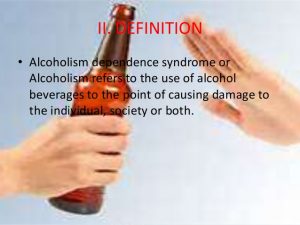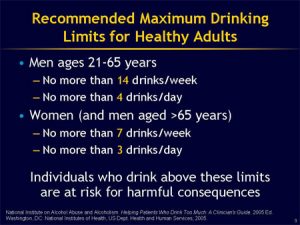
Work related stress in healthcare Setting
Stress may be defined as the physical and emotional response to excessive levels of mental or emotional pressure, which may arise from issues in both the working and personal life. Stress may cause emotional symptoms such as anxiety, depression, irritability or low self-esteem, or even manifest as physical symptoms including insomnia, headaches, loss of appetite and difficulties concentrating. Individuals experiencing high levels of stress may experience difficulty in controlling emotions such as anger, and may be more likely to experience illness or consume increased quantities of alcohol (NHS Choices, 2015). In the UK a survey undertaken by the Health and Safety Executive (HSE) has estimated that in the year 2013-2014, 487,000 of work related illnesses (39%) could be attributed to work-related stress, anxiety or depression (HSE, 2014). Additionally the survey found that as many as 11.3 million working days were lost in the year 2013-2014 as the direct result of work-related stress (HSE, 2014).

In addition to the physical and emotional symptoms of stress previously discussed, studies in this area have shown that nurses experiencing high levels of work-related stress were more likely to be obese and have low levels of physical exercise, factors which increased the likelihood of non-communicable diseases and co-morbidities such as hypertension and type 2 diabetes (Phiri et al., 2014).
Stress and staff absence
Chronic stress has been linked to “burnout”(Khamisa et al., 2015; Dalmolin et al., 2014), or a state of emotional exhaustion under extreme stress related to reduced professional fulfilment (Dalmolin et al., 2014) and “compassion fatigue”, where staff have experienced so many upsetting situations that they find it difficult to continue empathising with their patients (Wilkinson, 2014). As previously discussed, reducing staffing levels contribute to stress in nursing staff, and in this way chronic stress within the workplace launches a self-perpetuating cycle of understaffing; increased stress leads to increased illness, more staff absence and increased understaffing. In turn, these negative emotions also reduce job satisfaction and prompt many staff to consider leaving the nursing profession, further reducing staffing availability for services (Fitzpatrick and Wallace, 2011).
Reasons for work-related stress amongst healthcare professionals
Studies amongst nursing staff have also reported stress occurring as the result of poor and unsupportive management, poor communication skills amongst team members, institutional and organisational issues (e.g. outdated or restrictive hospital policies) or bullying and harassment (RCN, 2009). Even seemingly minor issues have been reported as exacerbating stress amongst nursing staff, for example a lack of common areas to take breaks in, changing shift patterns, and even difficulty and expense of car parking (Happell et al., 2013).
Work related stress can particularly affect student or newly qualified nurses, who often report higher expectations of job satisfaction from working in the profession, they have worked hard and aspired to join, and are therefore particularly prone to experiencing disappointment on discovering that they do not experience the job satisfaction that they presumed they would do whilst training. Student and newly qualified nurses may also have clear ideas from their recent training on how healthcare organisations should be run and how teams should be managed, and may then be disillusioned when they discover that the reality is that many departments could in fact benefit from improvements and further training for more experienced staff in these areas (Wojtowicz et al., 2014; Stanley and Matchett, 2014). Nursing staff are also likely to, on occasion, find themselves in a clinical situation that they feel unprepared for, or do not have the necessary knowledge to provide the best possible care for patients, and this may cause stress and anxiety (RCN, 2009). They may also be exposed to upsetting and traumatic situations, particularly in fields such as emergency or intensive care medicine (Wilkinson, 2014).

Recommendations for policies to address work related stress
It is acknowledged that many individuals find that being asked to perform tasks that they have not been adequately trained or prepared for can be very stressful. As such management teams should also try to ensure as far as possible that individuals are only assigned roles for which they have adequate training and abilities, and support employees with training to improve skills where necessary (RCN, 2009).
Surveys have frequently reported that organisational issues such as a lack of intuitive work patterns, overloading of workloads and an unpleasant working environment can all contribute to work related stress. Organisations can reduce the impact of these by developing programmes of working hours with working staff and adhering to them, making any necessary improvements to the environment (e.g. ensuring that malfunctioning air conditioning is fixed), and that incidents of understaffing are reduced as much as possible (RCN, 2009). Issues such as insomnia and difficulty in adapting to changing shift patterns can also be assisted by occupational health, for example by encouraging healthy eating and exercise (Blau, 2011; RCN, 2005). For example, in 2005 the RCN published an information booklet for nursing staff explaining the symptoms of stress, ways in which it can be managed e.g. relaxation through exercise or alternative therapies, and when help for dealing with stress should be sought (RCN, 2005). More recently, internet based resources are available from the NHS to help staff identify if they need assistance, and how and why it is important to access it (NHS Employers, 2015).
Witnessing or experiencing traumatic or upsetting events is an unavoidable aspect of nursing, and can even result in post-traumatic stress disorder (PTSD). However, there are ways in which staff can be encouraged by their management teams and organisations to deal with the emotions that these circumstances produce, limiting the negative and stressful consequences of these events. This may include measures such as counselling or even peer support programmes through the occupational health departments (Wilkinson, 2014). Staff should also be encouraged to use personal support networks e.g. family, as this can be an important and effective source of support, however studies have shown that support within the work place is most beneficial, particularly if this can be combined with a culture where healthcare professionals are encouraged to express their feelings (Lowery and Stokes, 2005).
One commonly cited reason for work related stress amongst nurses is the incompetence or unethical behaviours of colleagues, and a lack of opportunity to report dangerous or unethical practice without fear of reprisal. Therefore it is important that institutions and management teams ensure that there is an adequate care quality monitoring programme in place, and a culture where concerns can be reported for further investigation without fear of reprisal, particularly with respect to senior staff or doctors (Stanley and Matchett, 2014).
It has been reported that in the year 2012-2013, 1,458 assaults were reported against NHS staff (NHS Business Service Authority, 2013). Violence and abusive behaviour towards nursing staff is an acknowledged cause of stress and even PTSD, and staff have a right to provide care without fear (Nursing Standard News, 2015; Itzhaki et al., 2015). Institutions therefore have a responsibility towards their staff to provide security measures such as security staff, workplace design (e.g. locations of automatically locking doors) and policies for the treatment of potentially violent patients e.g. those with a history of violence or substance abuse issues (Gillespie et al., 2013).
As previously discussed, nurses are more likely than other healthcare professionals to experience moral distress as the result of a discrepancy between the actions they believe are correct and the actions they are able to perform (Whitehead et al., 2015). However there are policies that can be introduced into healthcare organisations to reduce its occurrence, and the severity with which it can affect nursing staff. Studies have shown that nurses who were encouraged to acknowledge and explore feelings of moral distress were able to process and overcome these in a less damaging manner than those who did not (Matzo and Sherman, 2009; Deady and McCarthy, 2010). Additionally, it is thought that moral distress is less frequent in institutions and teams that encourage staff to discuss ethical issues with a positive attitude (Whitehead et al., 2015). For example, institutions could employ a designated contact person for staff to discuss stressful ethical issues with, or set up the facility for informal and anonymous group discussion, for example on a restricted access internet-based discussion board (Matzo and Sherman, 2009)
Conclusion
Work related stress is responsible for significant costs to the NHS in terms of staffing availability and financial loss from staff absence from stress itself or co-morbidities that can be exacerbated by stress (RCN, 2009), for example hypertension and diabetes (Phiri et al., 2014; RCN, 2009, 2014a). The loss of valuable and qualified staff from the profession is also a significant cost to health services, and of course exacerbates the situation by increasing understaffing further, which in turn increases stress for the remaining staff (Hyrkas and Morton, 2013). It can also exert a significant cost to healthcare professionals who experience it, in terms of their ability to work, their personal health, effects on personal relationships (Augusto Landa et al., 2008) and job satisfaction (Fitzpatrick and Wallace, 2011). However, organisations can implement recommendations to reduce work related stress, for example by encouraging a positive and supportive culture for staff by offering interventions such as counselling (Wilkinson, 2014; RCN, 2005). Furthermore, interventions such as encouraging the reporting of unsafe or unethical practice – a commonly cited source of stress amongst nurses (RCN, 2009; Stanley and Matchett, 2014) – may also contribute to improving the quality of patient care.
References
Augusto Landa, J. M., López-Zafra, E., Berrios Martos, M. P. and Aguilar-Luzón, M. D. C. (2008). The relationship between emotional intelligence, occupational stress and health in nurses: a questionnaire survey. International Journal of Nursing Studies, 45 (6), p.888–901. [Online]. Available at: http://www.ncbi.nlm.nih.gov/pubmed/17509597
Blau, G. (2011). Exploring the impact of sleep‐related impairments on the perceived general health and retention intent of an Emergency Medical Services (EMS) sample. Career Development International, 16 (3), p.238–253. [Online]. Available at: http://www.emeraldinsight.com/doi/abs/10.1108/13620431111140147
Dalmolin, G. de L., Lunardi, V. L., Lunardi, G. L., Barlem, E. L. D. and da Silveira, R. S. (2014). Moral distress and Burnout syndrome: are there relationships between these phenomena in nursing workers? Revista Latino-Americana de Enfermagem, 22 (1), p.35–42. [Online]. Available at: http://www.scielo.br/scielo.php?script=sci_arttext&pid=S0104-11692014000100035
Deady, R. and McCarthy, J. (2010). A Study of the Situations, Features, and Coping Mechanisms Experienced by Irish Psychiatric Nurses Experiencing Moral Distress. Perspectives in Psychiatric Care, 46 (3), p.209–220. [Online]. Available at: http://www.ncbi.nlm.nih.gov/pubmed/20591128
Fitzpatrick, J. J. and Wallace, M. (2011). Encyclopedia of Nursing Research. 3rd ed. New York: Springer Publishing Company.
Gillespie, G., Gates, D. M. and Berry, P. (2013). Stressful Incidents of Physical Violence Against Emergency Nurses. OJIN: The Online Journal of Issues in Nursing, 18 (1). [Online]. Available at: http://www.nursingworld.org/MainMenuCategories/ANAMarketplace/ANAPeriodicals/OJIN/TableofContents/Vol-18-2013/No1-Jan-2013/Stressful-Incidents-of-Physical-Violence-against-Emergency-Nurses.html
Happell, B., Dwyer, T., Reid-Searl, K., Burke, K. J., Caperchione, C. M. and Gaskin, C. J. (2013). Nurses and stress: recognizing causes and seeking solutions. Journal of Nursing Management, 21 (4), p.638–647. [Online]. Available at: http://www.ncbi.nlm.nih.gov/pubmed/23700980
HSE. (2014). Statistics – Stress-related and psychological disorders in Great Britain. Health and Safety Executive. [Online]. Available at: http://www.hse.gov.uk/statistics/causdis/stress/index.htm
Hyrkas, K. and Morton, J. L. (2013). International perspectives on retention, stress and burnout. Journal of Nursing Management, 21 (4), p.603–604. [Online]. Available at:
Itzhaki, M., Peles-Bortz, A., Kostistky, H., Barnoy, D., Filshtinsky, V. and Bluvstein, I. (2015). Exposure of mental health nurses to violence associated with job stress, life satisfaction, staff resilience, and post-traumatic growth. International Journal of Mental Health Nursing, 24 (5), p.403–412. [Online]. Available at: http://www.ncbi.nlm.nih.gov/pubmed/26257307
Khamisa, N., Oldenburg, B., Peltzer, K. and Ilic, D. (2015). Work Related Stress, Burnout, Job Satisfaction and General Health of Nurses. International Journal of Environmental Research and Public Health, 12 (1), p.652–666. [Online]. Available at: http://www.ncbi.nlm.nih.gov/pmc/articles/PMC4306884/
Lowery, K. and Stokes, M. A. (2005). Role of peer support and emotional expression on posttraumatic stress disorder in student paramedics. Journal of Traumatic Stress, 18 (2), p.171–179. [Online]. Available at: doi:10.1002/jts.20016
Matzo, M. L. and Sherman, D. W. (2009). Palliative Care Nursing: Quality Care to the End of Life. 3rd ed. New York: Springer Publishing Company.
NHS Business Service Authority. (2013). 2012-13 figures released for reported physical assaults against NHS staff. NHS Business Service Authority. [Online]. Available at: http://www.nhsbsa.nhs.uk/4380.aspx
NHS Choices. (2015). Stress, anxiety and depression. NHS Choices. [Online]. Available at: http://www.nhs.uk/conditions/stress-anxiety-depression/pages/understanding-stress.aspx
NHS Employers. (2015). Health work and wellbeing. NHS Employers. Available at: http://www.nhsemployers.org/your-workforce/retain-and-improve/staff-experience/health-work-and-wellbeing
Nursing Standard News. (2015). Stress at work affecting nurses’ health, survey finds. Nursing Standard, 29 (27), p.8–8. [Online]. Available at: http://journals.rcni.com/doi/10.7748/ns.29.27.8.s6
Phiri, L. P., Draper, C. E., Lambert, E. V. and Kolbe-Alexander, T. L. (2014). Nurses’ lifestyle behaviours, health priorities and barriers to living a healthy lifestyle: a qualitative descriptive study. BMC Nursing, 13. [Online]. Available at: http://www.ncbi.nlm.nih.gov/pmc/articles/PMC4264254/
RCN. (2005). Working well initiative: Managing your stress. A guide for nurses. Royal College of Nursing. [Online]. Available at: http://www.rcn.org.uk/__data/assets/pdf_file/0008/78515/001484.pdf
RCN. (2009). Work-related stress. Royal College of Nursing. [Online]. Available at: https://www.rcn.org.uk/__data/assets/pdf_file/0009/274473/003531.pdf
RCN. (2014a). Importance of stress awareness. [Online]. Available at: http://www.rcn.org.uk/newsevents/news/article/uk/importance_of_stress_awareness
RCN. (2014b). Two thirds of staff have considered leaving the NHS. [Online]. Available at: http://www.rcn.org.uk/newsevents/news/article/uk/two_thirds_of_staff_have_considered_leaving_the_nhs
Sharma, P., Davey, A., Davey, S., Shukla, A., Shrivastava, K. and Bansal, R. (2014). Occupational stress among staff nurses: Controlling the risk to health. Indian Journal of Occupational and Environmental Medicine, 18 (2), p.52–56. [Online]. Available at: http://www.ncbi.nlm.nih.gov/pmc/articles/PMC4280777/
Stanley, M. J. C. and Matchett, N. J. (2014). Understanding how student nurses experience morally distressing situations: Caring for patients with different values and beliefs in the clinical environment. Journal of Nursing Education and Practice, 4 (10), p.p133. [Online]. Available at: doi:10.5430/jnep.v4n10p133
Whitehead, P. B., Herbertson, R. K., Hamric, A. B., Epstein, E. G. and Fisher, J. M. (2015). Moral Distress Among Healthcare Professionals: Report of an Institution-Wide Survey. Journal of Nursing Scholarship, 47 (2), p.117–125. [Online]. Available at: http://www.ncbi.nlm.nih.gov/pubmed/25440758
Wilkinson, S. (2014). How nurses can cope with stress and avoid burnout: Stephanie Wilkinson offers a literature review on the workplace stressors experienced by emergency and trauma nurses. Emergency Nurse, 22 (7), p.27–31. [Online]. Available at: http://rcnpublishing.com/doi/abs/10.7748/en.22.7.27.e1354
Wojtowicz, B., Hagen, B. and Van Daalen-Smith, C. (2014). No place to turn: Nursing students’ experiences of moral distress in mental health settings. International Journal of Mental Health Nursing, 23 (3), p.257–264. [Online]. Available at: http://www.ncbi.nlm.nih.gov/pubmed/23980930

 It is safe to declare that
It is safe to declare that 

You must be logged in to post a comment.